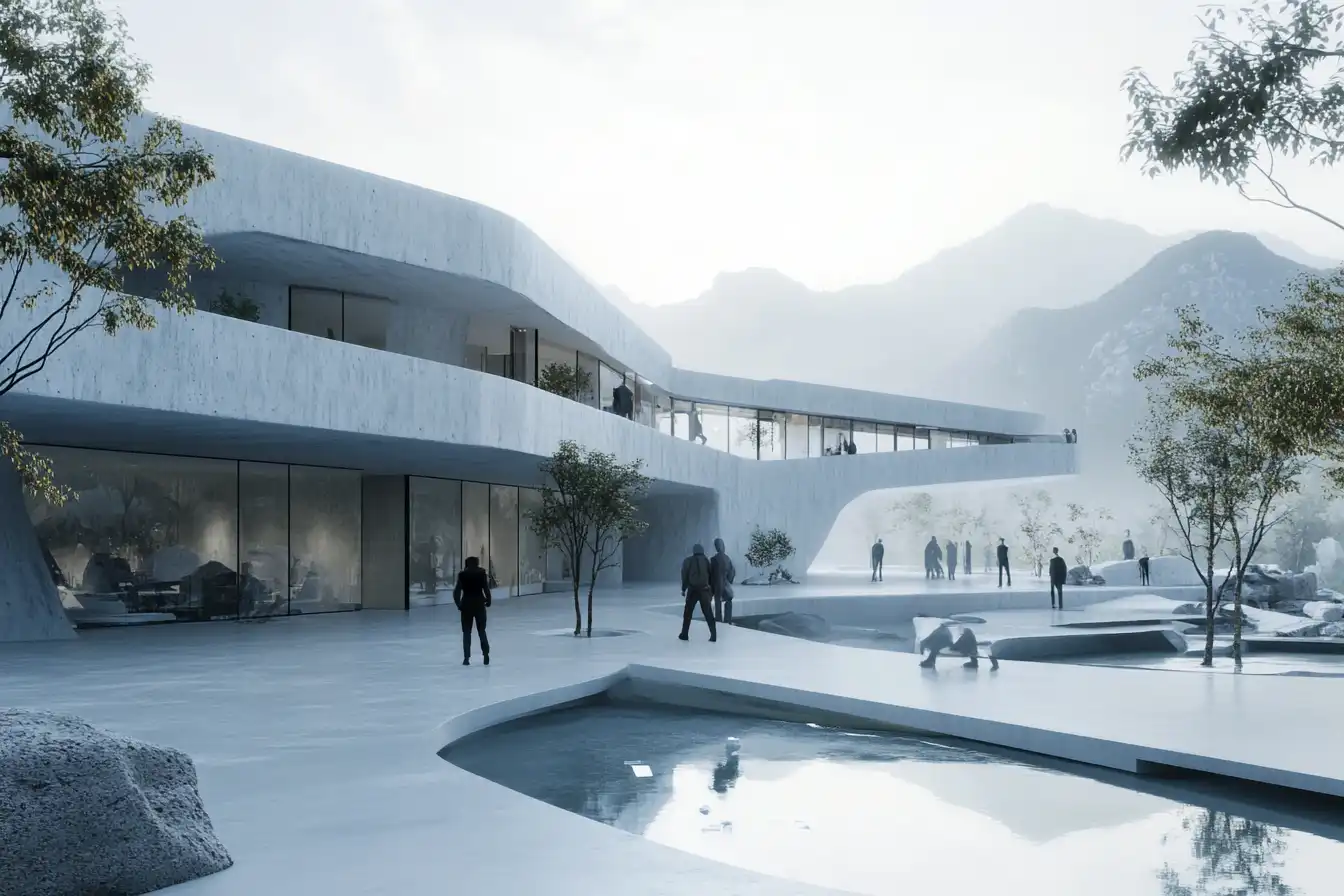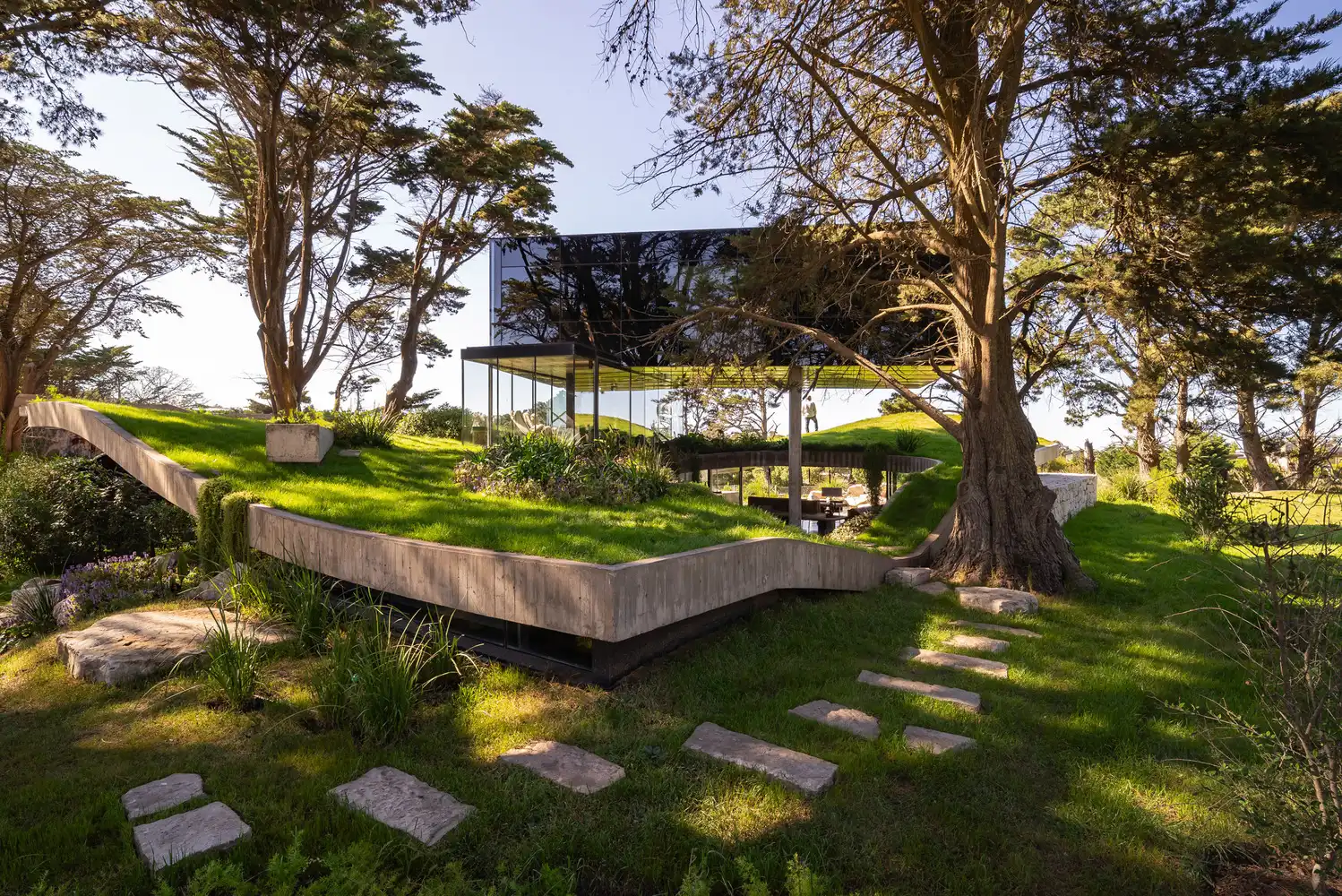In the fast-paced world of architecture and design, staying ahead means leveraging the latest technology. That’s where innovative architectural rendering software engines come in. These tools are revolutionizing how architects visualize and present their projects, transforming ideas into stunning visual experiences before a single stone is laid.
We’re seeing a surge in software capabilities that push the boundaries of realism and efficiency. From breath-taking 3D visualizations to interactive virtual reality tours, these engines are not just tools; they’re game-changers. They allow us to explore and refine every detail, ensuring that the final product isn’t just functional but also truly awe-inspiring.
Join us as we dive into the world of cutting-edge architectural rendering software. We’ll explore how these powerful engines are shaping the future of design, making it easier than ever to bring visionary projects to life.

Evolution of Architectural Rendering Software
The journey of architectural rendering software has been marked by significant technological advancements. These tools have evolved from simple sketches to complex real-time visualizations, impacting the efficiency and quality of architectural design.
From Basic CAD to Real-Time Visualization
Architectural rendering began with basic computer-aided design (CAD) software, which primarily assisted in drafting and technical drawings. In the 1980s, the introduction of CAD programs represented a major shift from hand-drawing to using computers, enhancing precision but still limiting in terms of visual capabilities.
Fast-forward to the present, and we witness the transition to real-time visualization technologies. Real-time rendering has revolutionized the way architects interact with their designs, allowing for immediate feedback and adjustments. Software like Unreal Engine and Unity have empowered architects to explore their designs in fully navigable 3D environments, making it easier to identify potential issues and experiment with design solutions before construction begins. This shift not only saves time and resources but also increases client engagement and satisfaction by providing immersive experiences.
Advances in Rendering Technology
Rendering technology has seen exponential growth in its capabilities, driven by both hardware improvements and software innovation. Initially, rendering was a time-consuming process that produced static images. However, the development of advanced rendering algorithms and the increased power of graphic processing units (GPUs) have enabled more sophisticated techniques like ray tracing and photorealistic rendering.
Technologies such as NVIDIA’s RTX ray tracing have set new standards for realism in architectural visualization, allowing shadows, reflections, and light to mimic real-world behavior more closely than ever before. Additionally, AI integration, like NVIDIA’s Deep Learning Super Sampling (DLSS), optimizes rendering performance, reducing times significantly while maintaining high-quality visual outputs. These advances have not only improved the aesthetic appeal of architectural presentations but have also enhanced the overall workflow, enabling architects to produce more accurate and detailed representations of their visions.

Key Features of Innovative Architectural Rendering Software Engines
In this section, we dive into the key features that set innovative architectural rendering software engines apart. These tools not only enhance the visualization capabilities but also improve the workflow and project delivery in architectural practices.
Real-Time Rendering Capabilities
Real-time rendering is a transformative feature in today’s architectural rendering software. Using this technology, architects receive instant visual feedback as they modify their designs, making the design process more interactive and efficient. For example, software like Unreal Engine and Unity incorporates real-time rendering that facilitates decision-making by allowing architects and clients to explore architectural changes instantaneously. This capability significantly reduces the time spent in the iterative process of design, enhancing both productivity and client satisfaction.
Integration with VR and AR
Virtual Reality (VR) and Augmented Reality (AR) integration in architectural rendering software engines provide immersive experiences that are invaluable in the design phase and client presentations. Programs equipped with VR and AR capabilities allow users to walk through their 3D models in a virtual space or overlay the digital model onto real-world landscapes. Such features, seen in software like Autodesk Revit and SketchUp, enable clients to visualize and interact with the design on a realistic scale, offering a profoundly persuasive communication tool that often results in quicker approvals and fewer revisions.
Artificial Intelligence for Enhanced Accuracy
Artificial Intelligence (AI) has been pivotal in enhancing the accuracy and detail of architectural visuals. AI algorithms can predict and simulate realistic lighting, textures, and materials, which elevate the final presentation of architectural projects. Advanced software engines leverage AI to automate mundane tasks, like optimizing light conditions or suggesting optimal material placements, thus saving architects valuable time. Additionally, AI integration aids in data analysis and error reduction, ensuring models are both beautiful and precise, as demonstrated in platforms like Rhino 3D enhanced with Grasshopper.

Top Innovative Architectural Rendering Software Engines in 2024
Exploring the technological frontier in architectural design, the top innovative architectural rendering software engines of 2024 have set new benchmarks in realism and user engagement. These software engines not only offer advanced visualization tools but also ensure streamlined workflows and enhanced user experiences.
The top innovative solutions for architectural rendering include real-time rendering, AI-powered design tools, and immersive technologies like Virtual Reality (VR) and Augmented Reality (AR). Real-time rendering, available in software like Lumion and Twinmotion, provides instant feedback, enabling faster design iterations. AI integration enhances precision in lighting, textures, and material representation, improving design accuracy. Immersive VR and AR experiences offer clients detailed, interactive views of projects, elevating engagement and decision-making. These advancements are transforming the architectural industry by streamlining workflows, improving design quality, and enhancing client satisfaction.
Realistic Lighting and Reflections
Architectural rendering software engines have made significant advancements in simulating natural lighting and reflections, elevating the realism of architectural models. Technologies such as ray tracing and global illumination are at the forefront, allowing architects to create visuals that closely mimic real-world scenarios. This realism plays a critical role in client presentations and decision-making processes, as it provides a vivid preview of how light interacts with different materials and surfaces throughout the day.
For instance, Unreal Engine and Unity have integrated these technologies to generate photorealistic renders. Ray tracing in Unreal Engine effectively simulates the complex behaviors of light, including reflections and shadows, which enhance the visual accuracy of architectural designs. Unity’s High Definition Render Pipeline (HDRP) is another example, offering high-fidelity graphics that improve the quality of lighting and shadows in complex scenes.
User-Friendly Interfaces and Workflows
Ease of use is paramount in innovative architectural rendering software engines, enabling architects to focus more on design and less on navigating the software. The leading engines of 2024 have optimized their user interfaces to be intuitive, supporting faster learning curves and efficient project management.
Software such as Autodesk Revit and SketchUp exemplify this trend. Autodesk Revit offers a streamlined interface that organizes tools logically, reducing the time it takes for new users to become proficient. Coupled with powerful collaboration tools, it facilitates a more effective team-based design process. SketchUp’s user-friendly approach, with its drag-and-drop functionality, allows designers to quickly modify elements and see immediate results, which enhances the overall design efficiency.
By focusing on both advanced rendering capabilities and user-friendly design, these engines provide architects with the tools they need to create, modify, and present their projects with unprecedented ease and clarity.

The Impact of Cutting-Edge Software on Architecture
Cutting-edge architectural rendering software engines significantly impact the field of architecture, enhancing creativity and efficiency. These tools have revolutionized the way architects design, develop, and present projects, focusing on improved aesthetics, precision, and client engagement.
Efficiency in Design Development and Presentation
Architectural rendering software has streamlined design development and presentation processes markedly. Enhanced 3D visuals enable architects to detect and correct design issues quickly, providing an immediate understanding of how various elements interact within a space. For instance, software like Autodesk Revit and Lumion aids in generating comprehensive project visualizations swiftly, which significantly reduces the development cycle.
Moreover, the ability to make real-time modifications has transformed client meetings. Our architects can now adjust and showcase changes during presentations, facilitating informed decision-making and boosting client confidence. It’s not only about saving time but also about enhancing the overall project execution by ensuring what’s proposed is both feasible and in alignment with client expectations.
Future Trends in Architectural Visualization
The future of architectural visualization lies in increasingly integrated and advanced technologies. The emergence of AI-driven tools is predicted to lead more precise modeling of complex textures and lighting effects, further blurring the lines between digital renderings and real-world perceptions. Purveyors of this technology, such as Unreal Engine and Unity, continuously integrate AI to automate and refine the rendering process, enhancing the realism of architectural simulations.
Additionally, the integration of Virtual Reality (VR) and Augmented Reality (AR) stands to drastically alter how architectural projects are presented and reviewed. By immersing clients into a virtual representation of their proposed spaces, architects can provide a more engaging and comprehensible experience. These advancements not only propel client satisfaction but also push the boundaries of architectural design, encouraging more dynamic and innovative project solutions. As technology continues to evolve, these tools will become indispensable in shaping the landscapes of tomorrow.

Conclusion
The evolution of architectural rendering software, from basic CAD to advanced real-time visualization, has greatly improved how designs are presented and experienced. Technologies like ray tracing, AI, and immersive 3D experiences now allow for more realistic and detailed representations, which help architects create better designs and improve client satisfaction. Tools like Autodesk Revit and SketchUp, with real-time rendering, enable quick design changes and faster decision-making, enhancing productivity. Looking forward, further integration of AI and immersive technologies like VR and AR will continue to revolutionize the way architects manage projects and interact with clients.
- 3D architectural visualization
- 3D Rendering Engines
- architectural animation software
- architectural design software
- architectural rendering software
- architectural visualization software
- best rendering software for architects
- high-quality rendering software
- innovative architectural rendering
- real-time rendering engines
- rendering software for architecture
- top architectural rendering tools
- VR architectural rendering















Leave a comment